Jesse Colin Jackson’s Marching Cubes, exhibited at Pari Nadimi Gallery, showcases 3D-printed forms, assembled as cubes, arranged in relation to the gallery space. As Pari Nadimi, the gallery Director, revealed, the configuration of Jackson’s Cubes is unique to the setting as Jackson adds or subtracts cubes based on the installation space. While Marching Cubes provides substantial material for viewer contemplation, the presence of the medium within the work is paramount to the exhibit’s meaning.
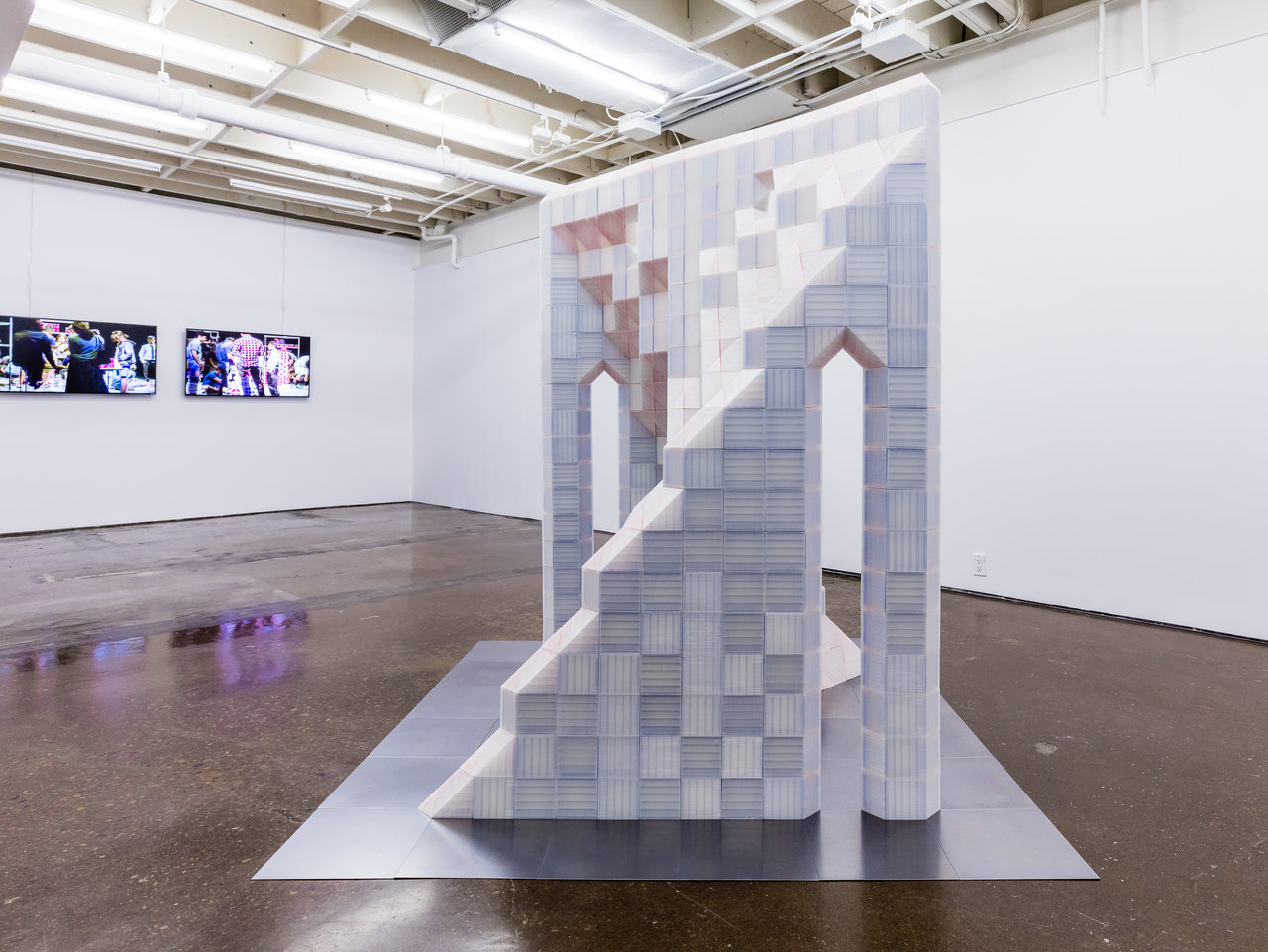 Jesse Colin Jackson, Marching Cubes, 2016, fused-deposition polylactic acid, neodymium magnets, commercial shelving units. Installation view at Pari Nadimi Gallery. Courtesy of Pari Nadimi Gallery
Jesse Colin Jackson, Marching Cubes, 2016, fused-deposition polylactic acid, neodymium magnets, commercial shelving units. Installation view at Pari Nadimi Gallery. Courtesy of Pari Nadimi Gallery
It is impossible to ignore the texture of Jackson’s cubes. Through the translucent cubes, the viewer can discern the underlying blue and pink colours of the cube components. Evoking the glass triangles of the National Gallery of Canada in places, Jackson’s cubes at once resemble both a delicate house of cards and a stable geometric structure. Most intriguing, however, is the imprint of the 3D printer on the surface of the cubes. They display a series of lines, either horizontal or vertical depending on the orientation of the cube components. Studying the surface even more closely, the viewer can detect that it is not polished and smooth; rather, the surface betrays the printing process. In addition to the uniformly-spaced horizontal or vertical lines, the surface of the cubes displays the almost-speckled texture of the polylactic acid, the medium of the 3D printer.
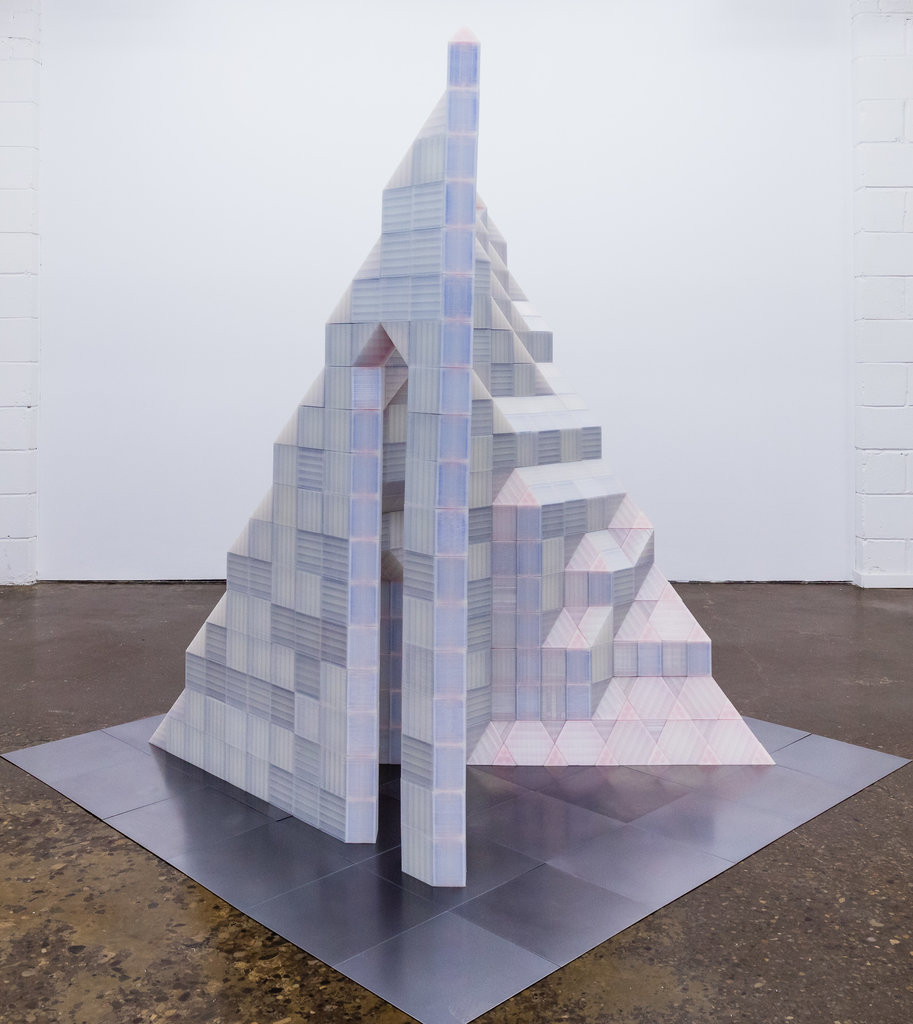 Jesse Colin Jackson, Marching Cubes, 2016, fused-deposition polylactic acid, neodymium magnets, commercial shelving units. Installation view at Pari Nadimi Gallery. Courtesy of Pari Nadimi Gallery
Jesse Colin Jackson, Marching Cubes, 2016, fused-deposition polylactic acid, neodymium magnets, commercial shelving units. Installation view at Pari Nadimi Gallery. Courtesy of Pari Nadimi Gallery
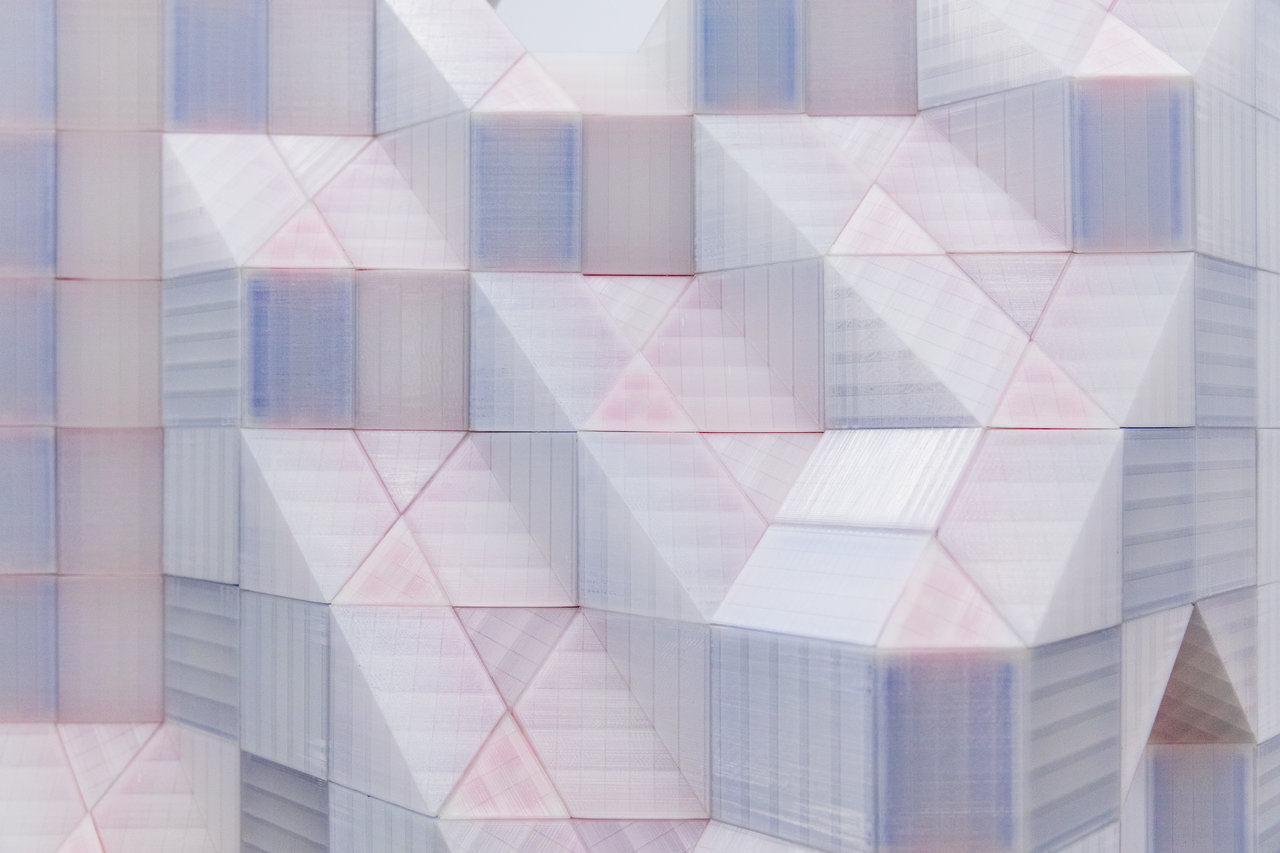 Jesse Colin Jackson, Marching Cubes, detail, 2016, fused-deposition polylactic acid, neodymium magnets, commercial shelving units. Installation view at Pari Nadimi Gallery. Courtesy of Pari Nadimi Gallery
Jesse Colin Jackson, Marching Cubes, detail, 2016, fused-deposition polylactic acid, neodymium magnets, commercial shelving units. Installation view at Pari Nadimi Gallery. Courtesy of Pari Nadimi Gallery
The printer’s texture on the cubes is most significant. By featuring the texture, the presence of the medium is amplified. Just as one observes the presence of the painter more in an impasto Van Gogh than in a varnished Ingres, so too is one aware of the printer from which Jackson’s cubes were created. The 3D printing medium, a contemporary embodiment of scientific and creative achievement, determines the viewer’s experience. When discussing the texture of the cubes, Nadimi pointed out that the exhibit “would be too virtual” without it. Nadimi’s characterization is integral to the meaning of Jackson’s Cubes – indeed, without the texture of the printer, the cubes would lack a tactile grounding. Technology, the new medium, and the way in which Jackson and his students learned to assemble the cubes, are the two major elements of this installation.
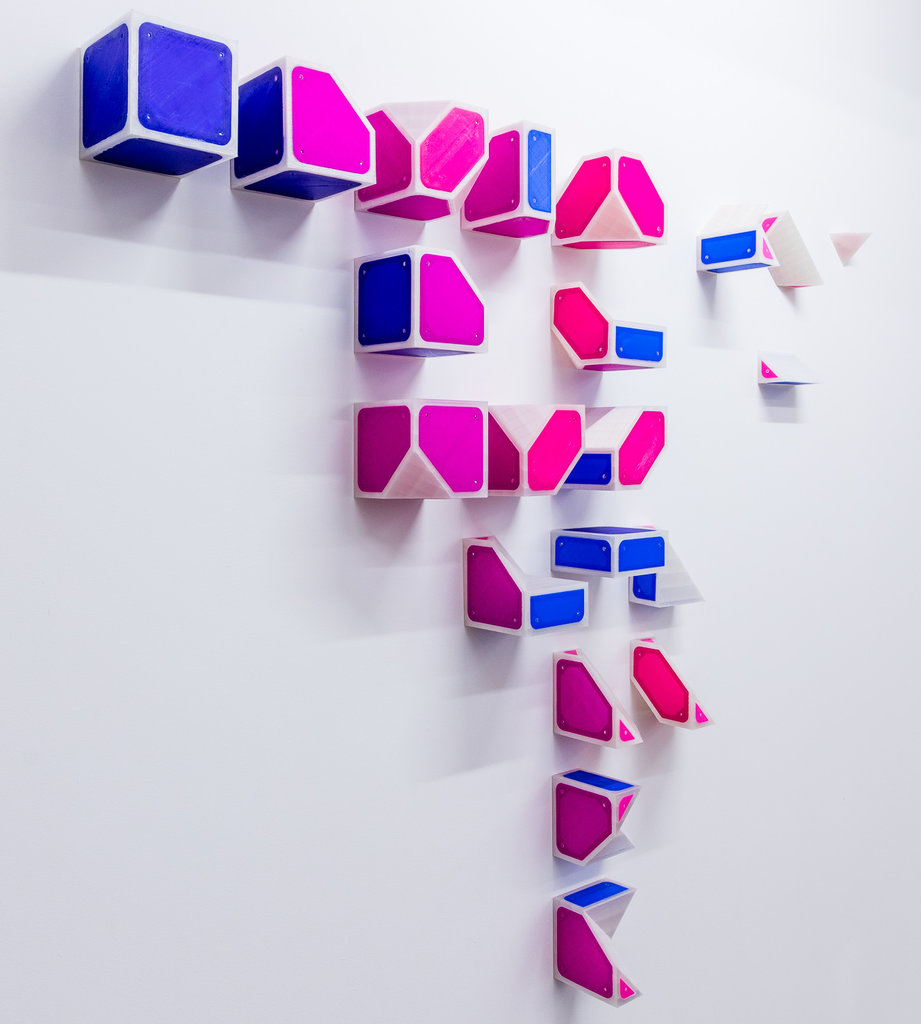 Jesse Colin Jackson, Marching Cubes, 2016, fused-deposition polylactic acid, neodymium magnets, commercial shelving units. Installation view at Pari Nadimi Gallery. Courtesy of Pari Nadimi Gallery
Jesse Colin Jackson, Marching Cubes, 2016, fused-deposition polylactic acid, neodymium magnets, commercial shelving units. Installation view at Pari Nadimi Gallery. Courtesy of Pari Nadimi Gallery
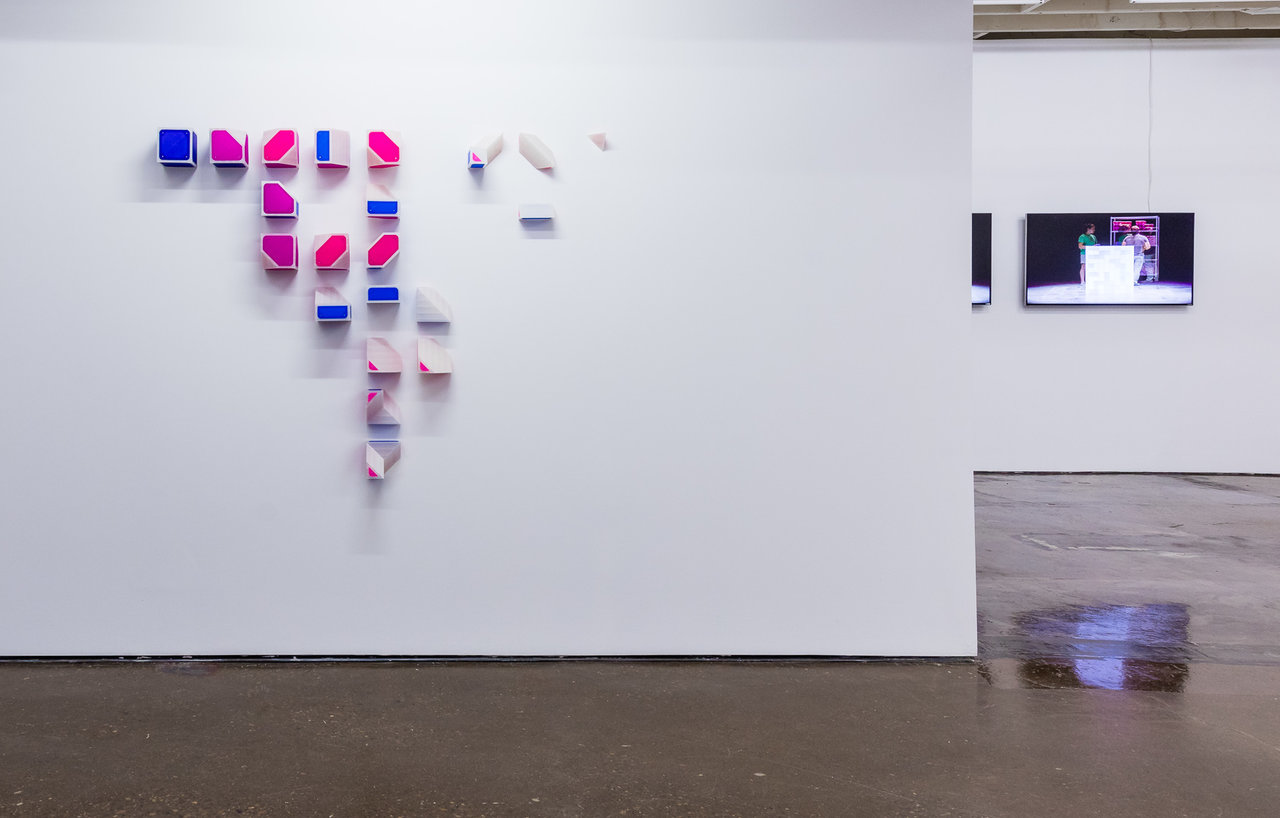 Jesse Colin Jackson, Marching Cubes, 2016, fused-deposition polylactic acid, neodymium magnets, commercial shelving units. Installation view at Pari Nadimi Gallery. Courtesy of Pari Nadimi Gallery
Jesse Colin Jackson, Marching Cubes, 2016, fused-deposition polylactic acid, neodymium magnets, commercial shelving units. Installation view at Pari Nadimi Gallery. Courtesy of Pari Nadimi Gallery
The sculptures composed of translucent square tiles fill the gallery’s space while the video loop on the wall screens show Jackson and his students assembling the cubes into various installations. Jackson’s use of this new 3D printing method and the collective creation of the final installation strikes the viewer as particularly resonant in 2017.
Laura Hutchingame
*Exhibition information: November 17, 2016 – January 12, 2017, Pari Nadimi Gallery, 254 Niagara Street, Toronto. Gallery hours: Wed – Sat, 12 – 5 pm.
